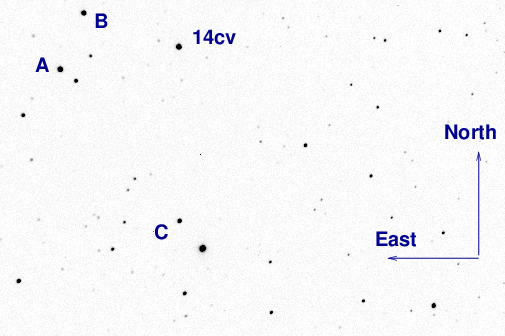
On the night of Jun 22/23, 2014, I observed the cataclysmic variable stars ASAS-SN14cv and ASAS-SN14cl. You can read more about these stars, which were both discovered only recently, at
Both stars showed nice variations tonight.
The main setup was:
Notes from the night
Here's a chart of the field of ASAS-SN14cv, which is at
RA = 17:43:48.58 Dec = +52:03:46.8 (J2000)

Some of the reference stars marked above have magnitudes in the UCAC4. Specifically, star "A" above is
The television camera on the finder scope shows the following when we're pointed at ASAS-14cv. North up, East left, field about 1 degree on a side.
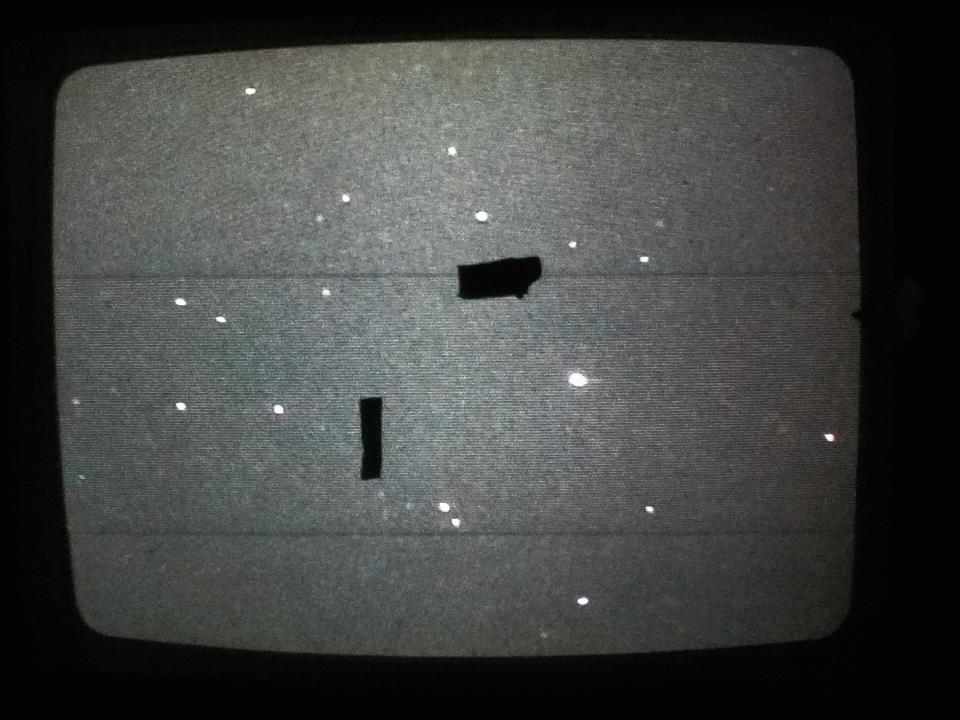
Below is a plot showing the sky brightness during the night. The jump in the middle occurs when I switch from ASAS-14cv to ASAS-14cl.

Image adjustment factors show no big features - good.
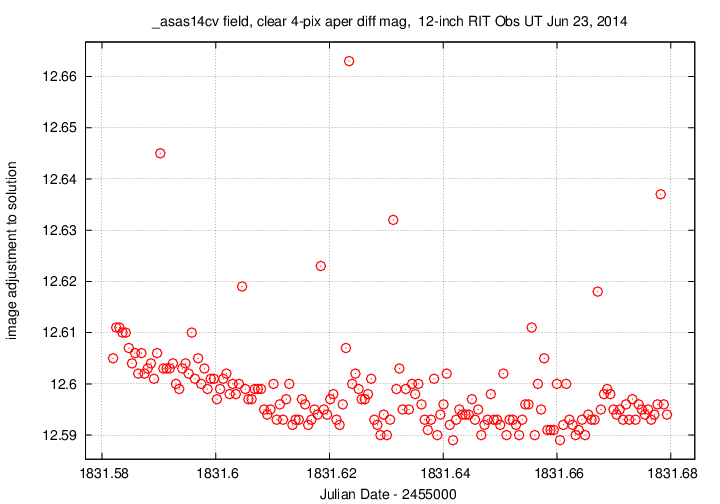
Using aperture photometry with a radius of 4 pixels (radius of 7.4 arcsec), I measured the instrumental magnitudes of a number of reference stars and the target. Following the procedures outlined by Kent Honeycutt's article on inhomogeneous ensemble photometry, I used all stars available in each image to define a reference frame, and measured each star against this frame. I used the AAVSO V-band magnitude of star "B" to convert the ensemble instrumental magnitudes to a reported "V"-band magnitude (but remember, it's a clear filter).
Sigma-vs-mag plot:
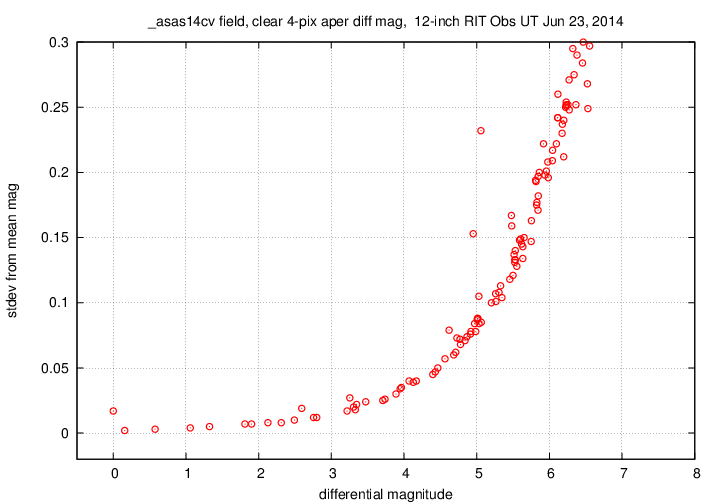
The target had a "V"-band magnitude of roughly 11.2, and though it was steady early in my observations, it suddenly started "humping" at about JD 1830.65. Excellent!
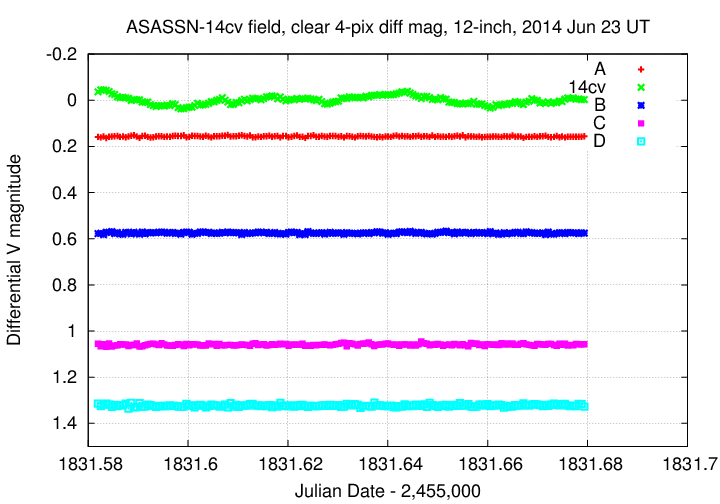
You can see my measurements of the star in the ASCII text file below. The first few lines are shown here:
# Measurements of ASAS_SN14cv made at RIT Obs, Jun 23, 2014 UT, # in good conditions, # by Michael Richmond, using 12-inch Meade and SBIG ST-8E CCD. # Exposures 30 seconds long, no filter. # Tabulated times are midexposure (FITS header time - half exposure length) # and accurate only to +/- 1 second (??). # 'mag' is a differential magnitude based on ensemble photometry # using a circular aperture of radius 7.4 arcseconds. # which has been shifted so UCAC4 711-058151 has mag=11.518 # which is its V-band mag according to UCAC4. # # UT_day JD HJD mag uncert Jun23.08197 2456831.58197 2456831.58342 11.325 0.003 Jun23.08252 2456831.58252 2456831.58397 11.316 0.003 Jun23.08308 2456831.58308 2456831.58453 11.316 0.003
Here's a chart of the field of ASAS-SN14cl, which is at
RA = 21:54:57.62 Dec = +26:41:16 (J2000)
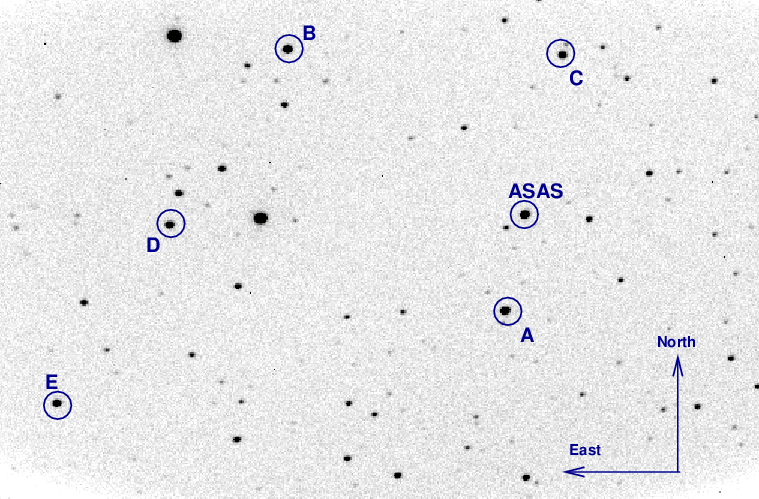
Some of the reference stars marked above have magnitudes the UCAC4 AAVSO chart 13493SS. Specifically, star "B" above is
The television camera on the finder scope shows the following when we're pointed at ASAS-14cl. North up, East left, field about 1 degree on a side.
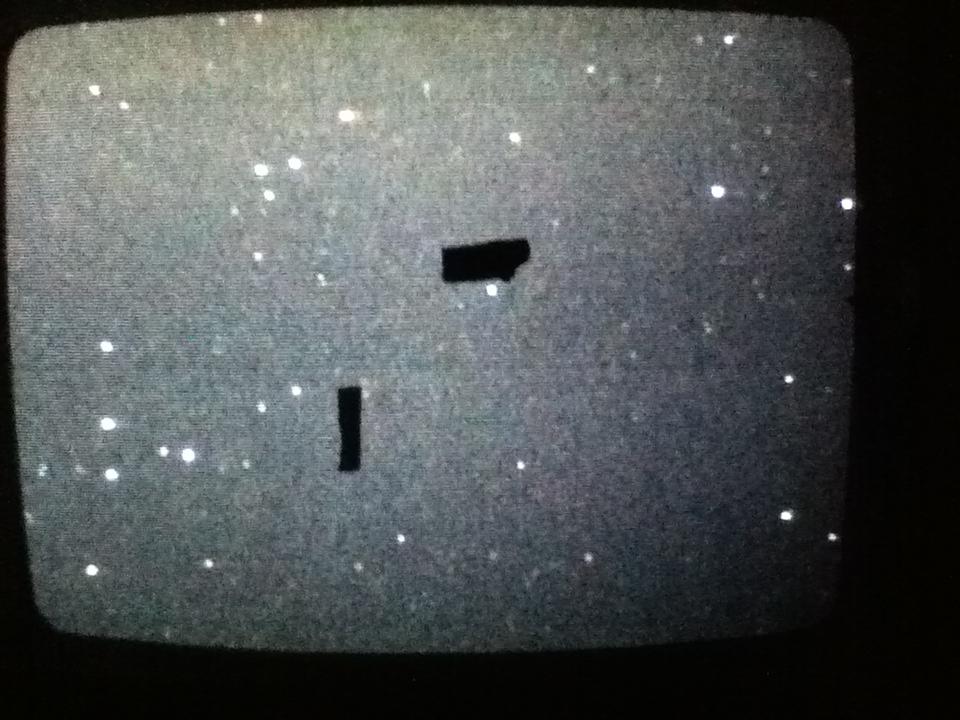
I took 30-second guided images through clear filter. There's a good guide star available if the target is placed on the chip at (353, 143).

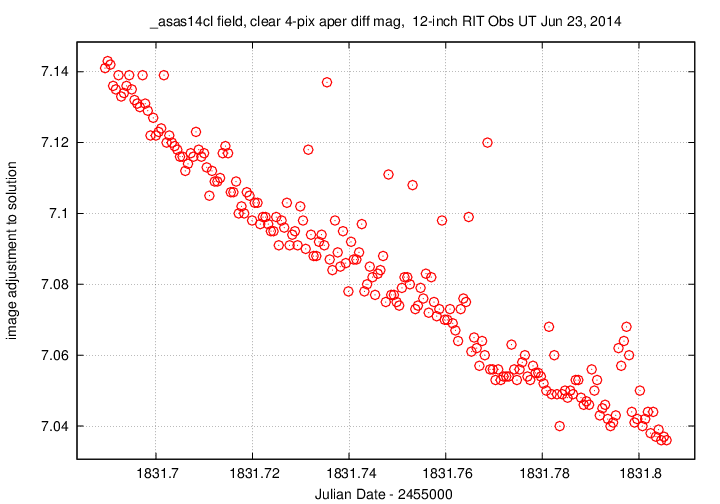
Using aperture photometry with a radius of 4 pixels (radius of 7.4 arcsec), I measured the instrumental magnitudes of a number of reference stars and the target. Following the procedures outlined by Kent Honeycutt's article on inhomogeneous ensemble photometry, I used all stars available in each image to define a reference frame, and measured each star against this frame. I used the AAVSO V-band magnitude of star "B" to convert the ensemble instrumental magnitudes to a reported "V"-band magnitude (but remember, it's a clear filter).
The target is the second-brightest star below; its scatter is much larger than that of stars of similar brightness.
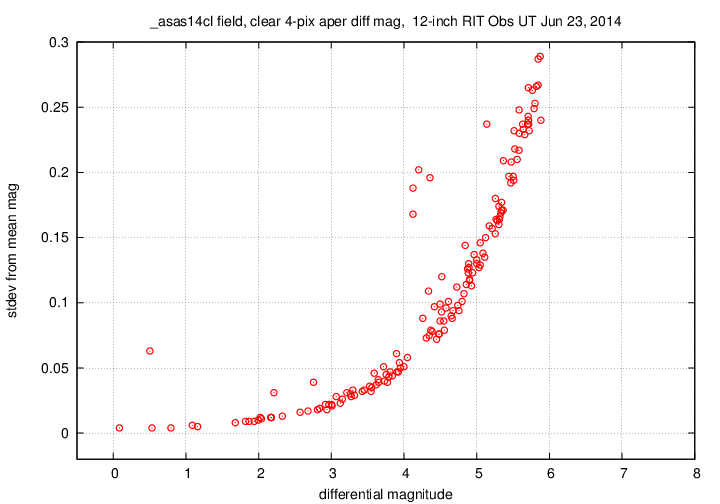
The target had a "V"-band magnitude of roughly 12.3, and it showed just a clear superhump signal over the course of the observations:
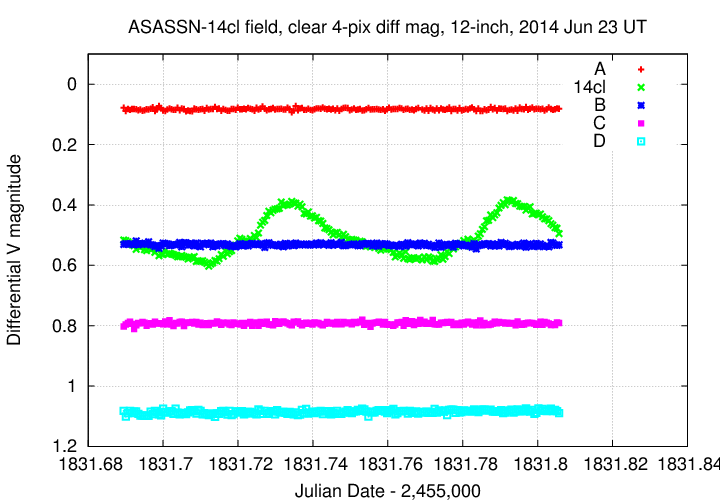
Grab the text file below for all the RIT measurements of ASAS-SN14cl. The header of the file is shown below.
# Measurements of ASAS_SN14cl made at RIT Obs, Jun 23, 2014 UT, # in good conditions, # by Michael Richmond, using 12-inch Meade and SBIG ST-8E CCD. # Exposures 30 seconds long, no filter. # Tabulated times are midexposure (FITS header time - half exposure length) # and accurate only to +/- 1 second (??). # 'mag' is a differential magnitude based on ensemble photometry # using a circular aperture of radius 7.4 arcseconds. # which has been shifted so UCAC4 584-123918 has mag=12.335 # which is its V-band mag according to AAVSO chart 13493SS. # # UT_day JD HJD mag uncert Jun23.18949 2456831.68949 2456831.69105 12.319 0.005 Jun23.19003 2456831.69003 2456831.69159 12.321 0.005 Jun23.19059 2456831.69059 2456831.69215 12.325 0.005
Last modified 6/23/2014 by MWR.